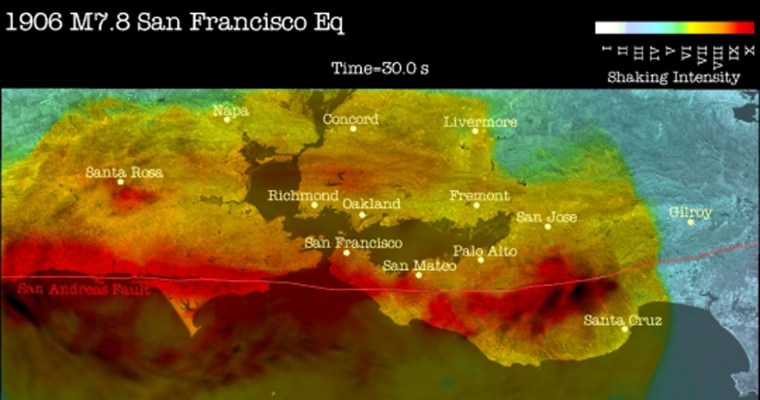Scientists have unveiled what they describe as the most detailed computer simulations of the catastrophic 1906 San Francisco earthquake.
The virtual models use three-dimensional geologic maps constructed by the U.S. Geological Survey last year to re-create a comprehensive portrait of how hard and how long the ground shook.
"It's so incredibly exciting to see these waves sweeping across," seismologist Mary Lou Zoback of the USGS said Tuesday in Menlo Park.
The computer models should help engineers determine which current buildings are most at risk from a quake and help with disaster preparedness, scientists said.
On April 18, 1906, a magnitude-7.8 quake struck San Francisco, sparking fires that killed about 700 people and leveled most of the city.
The temblor was centered about 2 miles (3.2 kilometers) offshore of San Francisco and was felt and caused damage along a 300-mile (500-kilometer) stretch of the San Andreas Fault.
The new simulations reveal that seismic waves raced away from the epicenter at 8,000 mph (12,800 kilometers per hour), Zoback said.
The models show strong jolts were felt at San Francisco City Hall about three seconds after the quake struck. Thirty seconds afterward, the entire San Francisco Bay region experienced intense shaking.
Scientists said they intend to apply the same methods to study the Hayward Fault, which last ruptured in 1868. Scientists say there is a 1-in-4 chance that a quake greater than magnitude-6.7 will hit the fault between 2002 and 2032.
